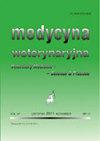基于心率恢复指数的驮马工作强度分析
IF 0.4
4区 农林科学
Q4 VETERINARY SCIENCES
Medycyna Weterynaryjna-Veterinary Medicine-Science and Practice
Pub Date : 2022-01-01
DOI:10.21521/mw.6678
引用次数: 0
摘要
到目前为止,还没有开发出用于测量驮马用力率的测试。在我们的研究中,首次使用心率再生指数来评估驮马的劳累和疲劳。一对马拉着一辆车,车上有12名游客和一个车夫,总重量约为1580公斤。7公里路段有82%是上坡路段,平均坡度为4.6%。在运送游客前、工作后立即和休息10分钟后对马匹进行心率对照检查。根据恢复指数计算马匹的用力分析,公式为(t2 - t3/t2 - t1) × 100%,其中t1为运动前的初始心率,t2为运动后立即的心率,t3为休息10分钟后的心率。采用以下用力评定量表:ⅰ组恢复指数80.1%轻度用力。通过分析发现,马的用力程度为:非常重的占3.3%,重的占50%,中度的占44.8%,轻的占1.9%。对于大约58%的马拉着满载的马车,与对照试验相比,这项工作要付出更大的努力,在2019年,当马拉着没有乘客的“空”马车时(P <0.001)。慢速马(76.1分钟)和快速马(67.6分钟)的消耗程度(疲劳程度)相同。心率恢复指数是一种简单且无创的测量马的运动(疲劳)及其对工作的适应性的方法,可用于评估马的工作准备和福利。本文章由计算机程序翻译,如有差异,请以英文原文为准。
Analysis of work intensity in draft horses based on the heart rate recovery index
So far, no tests have been developed for draft horses to measure their exertion rate. In our study, the heart rate regeneration index was used for the first time to assess the exertion and fatigue of draft horses. A pair of horses was pulling a cart with 12 tourists + a coachman with a total weight of about 1580 kg. The 7-kilometre part the road is uphill in 82%, with an average slope of 4.6%. The control examination of heart rate was performed on horses before transporting tourists, immediately after work and after 10 minutes of rest. The analysis of the horses’ exertion was calculated on the basis of the recovery index, according to the formula (t2 – t3/t2 – t1) × 100%, where t1 denotes the initial heart rate (before exercise), t2 – heart rate immediately after exercise, t3 – after 10 minutes of rest. The following scale of exertion assessment was adopted: group I recovery index <20% – very heavy exertion (long regeneration), group II – recovery index 20.1-50% – heavy exertion, group III – recovery index 50.1-80% – moderate exertion, group IV – recovery index > 80.1% light exertion. Based on the analysis, it was found that the horses’ exertion was: very heavy for 3.3% of horses, heavy for 50%, moderate for 44.8% and light for 1.9% of horses. For about 58% of the horses pulling the carts with full load, this work was a much greater effort compared to the control trials, when the horses pulled „empty” carts without passengers in 2019 (P <0.001). The degree of exertion (fatigue) was the same for horses with a slow pace (76.1 min) and for horses that covered the route at a faster pace (67.6 minutes). The heart rate recovery index is a simple and non-invasive measure of exertion (fatigue) of horses and their adaptation to the work performed and can be used both to assess the preparation of horses for work and their welfare.
求助全文
通过发布文献求助,成功后即可免费获取论文全文。
去求助
来源期刊

Medycyna Weterynaryjna-Veterinary Medicine-Science and Practice
VETERINARY SCIENCES-
CiteScore
0.80
自引率
0.00%
发文量
73
审稿时长
4-8 weeks
期刊介绍:
"Medycyna Weterynaryjna" publishes various types of articles which are grouped in the following editorial categories: reviews, original studies, scientific and professional problems, the history of veterinary medicine, posthumous memoirs, as well as chronicles that briefly relate scientific advances and developments in the veterinary profession and medicine. The most important are the first two categories, which are published with short summaries in English. Moreover, from 2001 the editors of "Medycyna Weterynaryjna", bearing in mind market demands, has also started publishing entire works in English. Since 2008 the periodical has appeared in an electronic version. The following are available in this version: summaries of studies published from 1999 to 2005, full versions of all the studies published in the years 2006-2011 (in pdf files), and full versions of the English studies published in the current year (pdf). Only summaries of the remaining studies from the current year are available. In accordance with the principles accepted by the editors, the full versions of these texts will not be made available until next year.
All articles are evaluated twice by leading Polish scientists and professionals before they are considered for publication. For years now "Medycyna Weterynaryjna" has maintained a high standard thanks to this system. The review articles are actually succinct monographs dealing with specific scientific and professional problems that are based on the most recent findings. Original works have a particular value, since they present research carried out in Polish and international scientific centers.
 求助内容:
求助内容: 应助结果提醒方式:
应助结果提醒方式:


